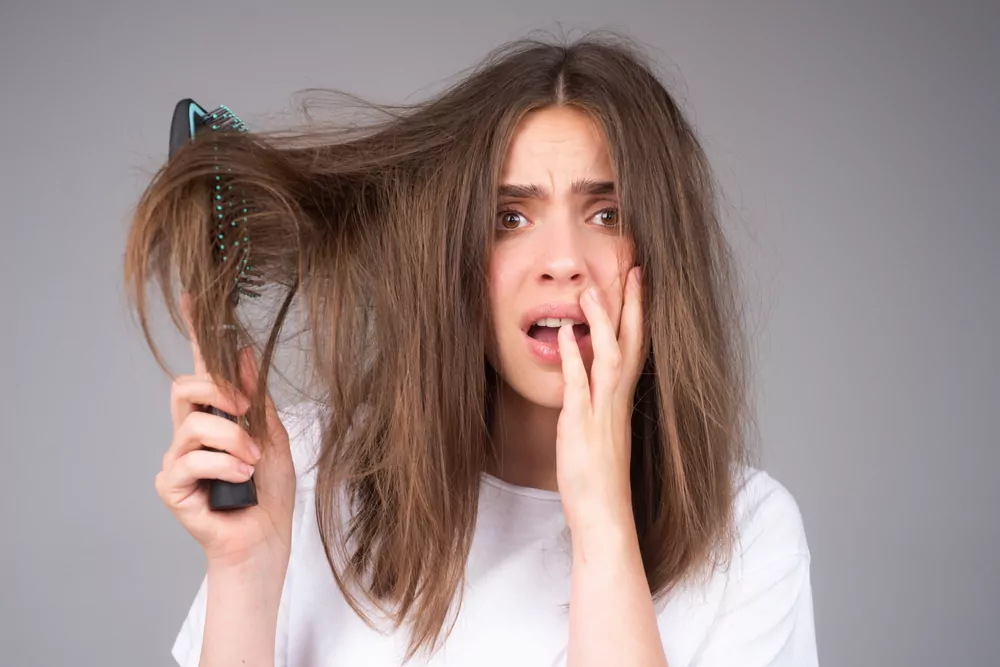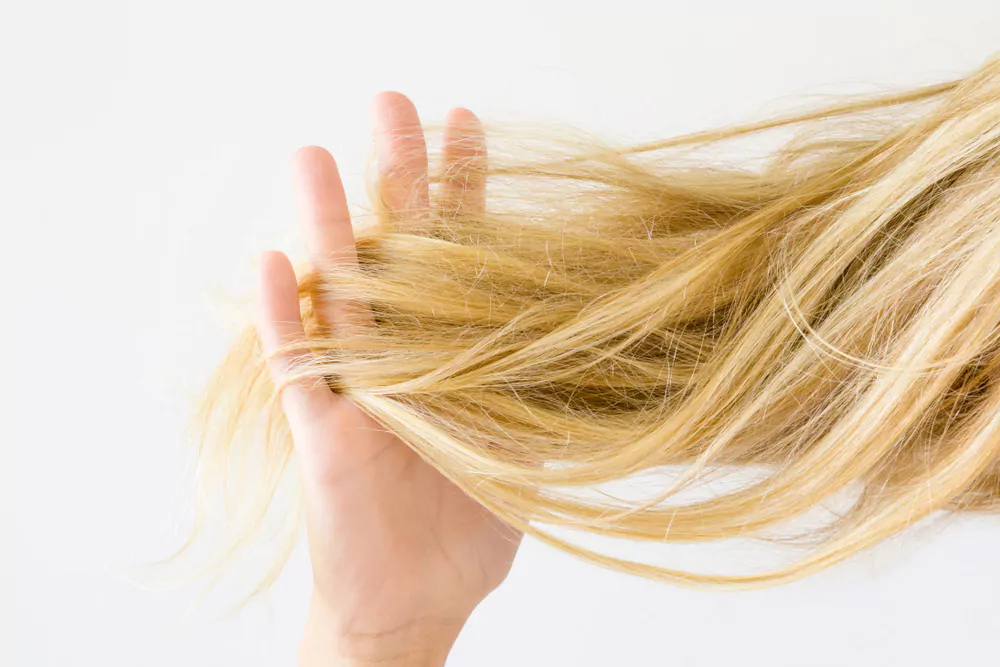How to Get Rid of Frizzy Hair in 5 Minutes? Hair-Care Guide

Are you tired of battling with unruly frizzy hair that seems to have a mind of its own? Do you wish you could achieve smooth, silky locks without spending hours in front of the mirror? Well, get ready to say goodbye to frizz and hello to fabulous hair in just five minutes! In this ultimate guide, we will unveil the secrets to taming frizzy hair, helping you achieve the luscious, manageable mane you’ve always dreamed of.
Whether you’re rushing to work, getting ready for a night out, or simply want to feel fantastic in your everyday life, we’ve got you covered. Get ready to unlock the secrets that will transform your hair from a frizzy frenzy to a picture-perfect masterpiece, all in just five minutes! So, let’s find out how to get rid of frizzy hair in 5 minutes.
1 Understanding the Causes of Frizzy Hair

Before we jump into the solutions, it’s essential to understand the root causes of frizz. Frizz occurs when the cuticle layer of your hair becomes raised, allowing moisture to penetrate the hair shaft and causing it to swell. Some common causes of frizzy hair include:
- Humidity: High humidity levels lead to increased moisture in the air, which can wreak havoc on your hair, particularly for those with naturally curly or wavy hair. The moisture in the air is absorbed by the hair, causing it to swell and frizz.
- Dryness: On the flip side, dry weather conditions can also strip moisture from your hair, leaving it prone to frizz and flyaways. When the hair lacks moisture, the cuticles become rough and raise, resulting in frizziness.
- Heat Damage: Excessive use of hot styling tools like flat irons, curling irons, and blow dryers can damage the hair cuticles, making them more susceptible to frizz. The heat breaks down the protein bonds in the hair, leading to a weakened structure and frizzy appearance.
- Chemical Treatments: Chemical processes like hair coloring, perming, and relaxing can weaken the hair structure and cause frizziness if not properly cared for. These treatments can strip the hair of its natural oils, leaving it dry, damaged, and prone to frizz.
2 Quick-Fix Techniques to Get Rid of Frizz in 5 Minutes

Hydrating Mask
Start by applying a hydrating hair mask or deep conditioner. Look for products that contain moisturizing ingredients such as shea butter, argan oil, or coconut oil. Apply the mask from the mid-lengths to the ends of your hair and leave it on for the recommended time. Rinse thoroughly to seal in moisture and reduce frizz.
T-Shirt Drying
After showering, resist the temptation to vigorously towel dry your hair. Instead, gently squeeze out excess water with a soft t-shirt or microfiber towel. Regular towels can rough up the hair cuticles, leading to frizz. Using a t-shirt helps absorb moisture while minimizing friction.
Leave-In Conditioner
Apply a lightweight leave-in conditioner to damp hair. Choose products that are specifically formulated to combat frizz and provide hydration. Distribute the conditioner evenly through your hair, focusing on the mid-lengths and ends. This step helps to seal the hair cuticles and reduce frizz.
Wide-Tooth Comb
Using a wide-tooth comb, gently detangle your hair, starting from the ends and working your way up. This prevents breakage and minimizes stress on the hair, reducing frizz. Avoid using brushes or fine-tooth combs, as they can cause friction and breakage.
Anti-Frizz Serum or Oil
Apply a small amount of anti-frizz serum or oil to your palms and rub them together. Then, run your hands through your hair, focusing on the areas where frizz is most prominent. The serum or oil will help to smooth the cuticles and provide a protective barrier against humidity. Check out our product review on the best oil for hair growth and anti-frizz to invest in.
3 Tips for Maintaining Frizz-Free Hair

Choose the Right Hair Care Products
Opt for shampoos and conditioners specifically designed to combat frizz. Look for products labeled as “smoothing,” “frizz control,” or “anti-frizz.” Avoid those containing sulfates, as they can strip away natural oils and contribute to dryness. Additionally, consider using a clarifying shampoo once a month to remove buildup that can weigh down the hair.
Limit Heat Styling
Reduce your reliance on heat styling tools, as they can damage the hair cuticles and exacerbate frizz. If you must use them, apply a heat protectant spray beforehand and keep the temperature on the lower side. Embrace heat-free hairstyles like braids, buns, or natural curls to give your hair a break from heat.
Sleep on Silk or Satin Pillow Cover
Swap your cotton pillowcase for a silk or satin one. These materials cause less friction against your hair, reducing frizz and preventing tangles while you sleep. Additionally, consider tying your hair up in a loose bun or braid before bed to minimize friction and maintain your hairstyle.
Embrace Natural Drying Methods
Whenever possible, allow your hair to air dry instead of using heat. If you’re short on time, use a diffuser attachment on your blow dryer, set to a low or cool setting, to minimize frizz and preserve natural texture. Avoid touching or manipulating your hair excessively while it’s drying to prevent frizz from forming.
Regular Trims
Split ends and damaged hair contribute to frizziness. Schedule regular trims every 6-8 weeks to remove split ends and maintain healthy-looking hair. Trimming also helps to prevent the split ends from traveling up the hair shaft and causing further damage.
4 Conclusion
Taming frizzy hair doesn’t have to be a time-consuming ordeal. By following the quick-fix techniques mentioned above and incorporating the supplementary tips into your hair care routine, you can achieve smooth, frizz-free locks in just five minutes. Remember, consistency is key, so be patient and give your hair the care it deserves. Embrace your beautiful, frizz-free hair with confidence!
Note: While the methods provided in this blog can help reduce frizz in a short time, it’s important to note that long-term frizz management may require additional steps and personalized care. Consulting a professional hair stylist or trichologist can provide further guidance tailored to your specific hair needs.
Community Q&A
About This Article
Hardik Jethva is an experienced author of the BestCheck family. Working from scratch, he has developed an amazing interest in testing and writing about different products in a transparent manner. His writing skills got more audience for BestCheck. Apart from his professional life, Hardik has his eyes on travelling, meditation, eating healthy food, socializing with people, and car rides.
This article has been viewed 437 times.



